Even the best treadmills can pose safety risks for those using them incorrectly. Not only does this include using these exercise machines in a different manner than intended, but it can also mean running or walking on treadmills with poor form or while wearing improper footwear.
Because treadmills rely on motors to move the deck, there can be an increased risk of injury to athletes when compared to user-powered exercise machines like ellipticals. In fact, the U.S. Consumer Product Safety Commission reported that over 22,000 emergency room visits in 2019 were the result of treadmill injuries. (1)
Additionally, if you have small children in the home, treadmills can be extremely dangerous if they get near them. As a personal trainer and group exercise instructor, I’ve seen my fair share of treadmill-related injuries, and based on my professional experiences and in-depth research, I’ve this list of expert treadmill safety tips to help you avoid treadmill injuries both in the home or at the gym.
Treadmill Safety Tips
Whether you are a beginner or a seasoned runner, treadmills offer a variety of benefits for those using them at home or in the gym. However, they also come with risks if used improperly. Below, we’ve listed out some key treadmill safety tips so users can rest assured that they’re doing everything they can to prevent treadmill-related injuries.
Read The Manual
It’s hard to imagine a more boring treadmill safety tip than this one. Yet, according to BarBend expert reviewer Amanda Capritto CPT, CES, CNC, CF-L1, CSNC, reading the manual is one of the most important things a treadmill owner or operator can do before stepping on the machine.
“A treadmill is a machine, and with any machine, there are safety risks,” she says. “Make sure to read the user manual and fully understand all instructions before attempting to operate the treadmill. Follow safety protocols regarding kids and pets.”
By reading the manual, you will gain a more thorough comprehension of how this exercise equipment works. Additionally, you can better understand how to use the treadmill’s safety features, which we will go into in greater detail below.
Always Look Ahead, Not Down
Whether you are jogging outdoors or sweating on one of the best treadmills for running, it’s important to always look ahead and not down at your feet or the ground. When outdoors, looking forward allows you to always see what’s happening and if there are any dangers or obstacles in your way, like a trip hazard or a parked car.
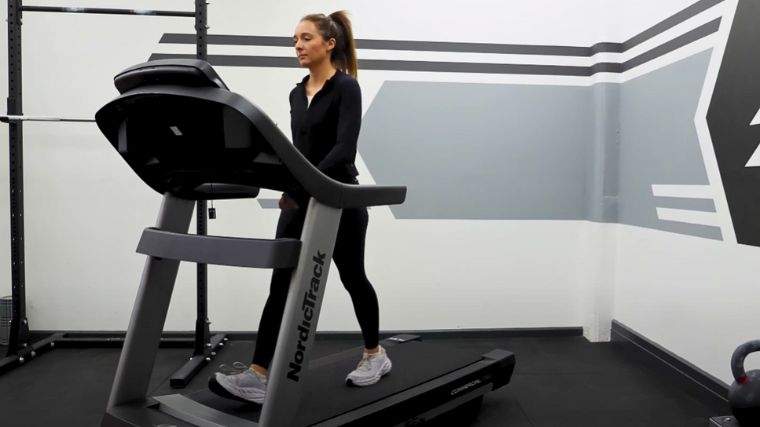
When running on a treadmill, looking forward ensures that you will maintain good balance and prevent falling. Also, if you’re looking down at your feet or the moving deck, it’s unlikely that you’re practicing proper form. This can lead to neck or back pain, among other physical ailments. We will further discuss the importance of practicing proper treadmill running form below.
Clear Any Clutter
Before turning on the treadmill, make sure to clear away any clutter on the deck, handles, or console. Objects such as clothing or toys can get caught up in the treadmill deck and cause the machine to malfunction, which can lead to injuries or expensive repairs.
You’ll also want to make sure there’s enough space around your treadmill, so that you won’t bump into a wall or piece of furniture if you lose your balance. Consumer Reports recommends 2 feet of open space on either side of the treadmill and 6 feet of open space behind it. (2) This is an easy-to-practice safety precaution that can help prevent unwanted treadmill accidents.
Dress To Sweat, Not To Impress
As a personal trainer, I always instruct my clients to wear proper clothing when exercising. The wrong type of clothing or accessories can create an unfavorable situation, like restricted movement, unpleasant smells, and even injuries.
Do not wear baggy clothes or jewelry, as they can easily get snagged on an exercise machine and cause you to trip. Clothes that are too tight can also restrict movements and impede the benefits of certain exercises. It’s best to wear comfortable, breathable clothing that’s form-fitting without being too tight.
[Related: Best ProForm Treadmills]
I also suggest avoiding materials made of 100-percent cotton, as they absorb moisture and are slow to dry. This can result in heavier clothing that can increase chafing and cause chills. You’ll also want to abstain from using any fragrances or lotions. Not only are these smells a distraction to everyone around you, but they can be greasy and lead to losing grip of a handlebar or dumbbell.
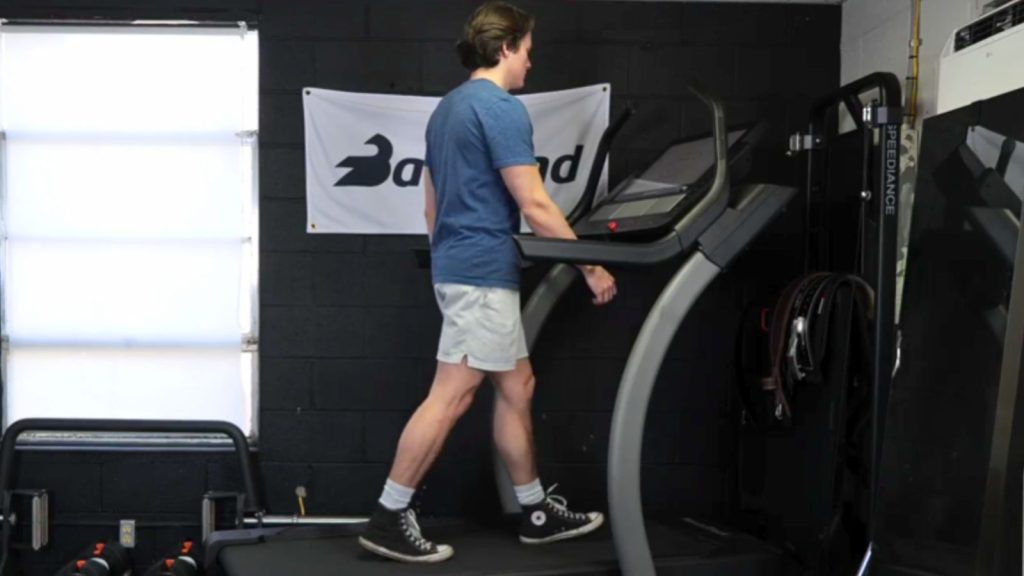
Lastly, make sure to wear proper shoes when exercising on or off treadmills. Poor footwear can easily lead to a loss of balance, falling, or an assortment of foot and ankle injuries that we will further discuss below.
Always Use The Treadmill Safety Key
One of the most important treadmill safety features is the safety key. This little device, often bright red in color, clips on to your clothing, while the other end is connected to the console. When the safety key is disconnected, it immediately brings the treadmill to a halt. It’s designed to dislodge if you lose your balance, but having it nearby also ensures you can give it a yank if you begin to feel lightheaded.
Straddle the Treadmill Deck
By straddling the sides of the treadmill deck at the beginning of a workout, you can better ensure that the starting speed isn’t too fast for you. If you start the treadmill while already standing on the deck, the speed may catch you off guard and cause you to fall. However, if you straddle the sides, then you can feel confident that the speed is amenable to your desired pace.
Don’t Step Off Until the Belt Has Stopped
Let the treadmill come to a complete stop before stepping off. Sometimes, it can take a few seconds for the belt to stop moving after your workout is finished.
By allowing the machine to come to a complete stop, you can help prevent any imbalances, slips, or falls, especially if you’re feeling lightheaded or out of breath. Taking a moment to slow down and breathe after a run also allows you (and your muscles) to properly cool down.
Gradually Increase and Decrease Intensity
Unless you are an advanced athlete, it’s best to control one variable at a time when operating a treadmill in order to avoid injury. Start by slowly increasing the speed so that you can properly warm up and adjust to the intensity — just a few miles per hour or degrees of incline at a time.
Then, if desired, you can gradually increase the speed or incline to make the workout more challenging. When winding down, slowly decrease the speed and then the incline so you can come to a slow, controlled stop. This approach can help prevent any trips or falls and can also help you catch your breath and cool down.
Keep Children Away
It should go without saying, but keep young children away from the treadmill at all times. Kids can suffer friction burns and life-threatening injuries by coming too close to a moving belt. In May 2021, for example, the U.S. Consumer Product Safety Commission recalled the Peloton Tread+ after reports of numerous injuries, including the death of a 6-year-old who was pulled under the rear portion of the moving belt. (3)
It’s important to always be aware of any kids treadmill dangers and to implement safety protocols to keep your children safe. Ideally, you’ll want to keep the treadmill in a locked room and away from your kids. If this is not possible, then position the machine so that you can see if any children enter the room.
Additionally, make sure you always shut off and secure a treadmill after using it. This includes bundling up all cords, removing the safety key, and, if you have a folding treadmill, folding it up and storing it away. Some treadmills even have security codes that can add an extra layer of protection. If you’ve got a curious baby or toddler in the house, we’d also recommend putting a baby gate around the treadmill.
Common Treadmill Safety Features
Many modern treadmills come with standard safety features to prevent unwanted injuries and keep you safe while operating the machine. The following is a breakdown of some features you’re likely to find.
Treadmill Safety Key
Treadmill safety keys are quite possibly the most important safety feature found on a treadmill. These keys are designed to instantly bring the treadmill to a halt by cutting off the power to the motor. Treadmill safety keys are often bright red in color with one end of the cord or string attached to a magnet and the opposite end attached to a clip.
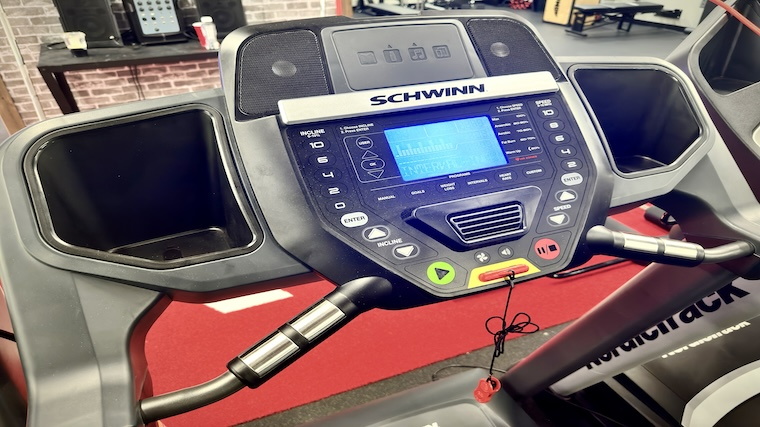
The magnet is connected to the treadmill console, and it can send a signal to turn the motor on or off. The other end is the safety clip that you can attach to your clothing during your run. If at any moment you feel faint or imbalanced, the safety key can be pulled to disconnect from the treadmill console and shut off the power to the motor. This will bring the treadmill deck to a halt.
Handrails
Treadmill handrails are an important safety feature for those who need a little extra assistance while walking or jogging. They’re also an excellent support system for users that might be experiencing fatigue or any lightheadedness during a workout. Additionally, handrails can be helpful when climbing on or off the treadmill.
Panic Button
Although it’s not officially called a “panic button,” many modern treadmills have a large (often bright red) emergency stop button that’s easy to access on the console. It’s similar in function to the treadmill safety key, as hitting the button will bring the treadmill to an immediate halt.
It’s important to note where the button is located on the console before operating the machine. When training clients, I always have them point out where the button is before the belt begins moving. It’s worth noting that this button is not meant to replace wearing the treadmill safety key. Instead, it’s to be used in conjunction with the key in order to improve your safety.
Heart Rate Monitor
Your heart rate is a good indicator of how hard you are exercising. Many of the best commercial treadmills have built-in heart rate monitors on the handrails to gauge how high your heart rate is. Other treadmills are compatible with Bluetooth, which can allow you to connect an external heart rate monitor.
Your target heart rate is the zone you want to be in when exercising. It’s a zone that doesn’t overexert yourself, but also ensures that you are putting in the necessary effort to experience the benefits of cardio. An overly high heart rate during treadmill usage could lead to dizziness, shortness of breath, fainting, or falling.
Typically, the average user should have a target heart rate of 50 percent to 85 percent of their maximum heart rate. (4) In general, your maximum heart rate can be determined by subtracting your age from 220. So, if you are 40 years old, then your maximum heart rate is roughly 180 beats per minute (220-40) and your target heart rate should be between 90 beats per minute and 153 beats per minute.
Once you’ve pinpointed your target heart rate, heart rate monitors can help you reach it and maintain it during your workout.
How to Avoid Treadmill-Related Injuries
Using a treadmill is meant to aid you in accomplishing your health and fitness goals, whether that be losing weight or improving your overall cardio conditioning. Unfortunately, treadmill usage also comes with some risk. In addition to the aforementioned safety tips, here are some practices you can incorporate into your training to help avoid treadmill-related injuries.
Proper Form
Poor form when running or walking on a treadmill can lead to numerous injuries, like chronic pain, sprains, and strains to your hips, knees, ankles, and feet. To avoid any of these types of injuries, and others commonly associated with shin splits, it’s important that you run or walk with proper form.
[Related: How to Prevent Shin Splints From a Treadmill]
For the average person without any health issues or limitations, proper running and walking form requires the following:
- Keeping your head upright and eyes looking straight ahead
- Pointing your toes forward
- Holding your body upright and keeping your spine straight
- Engaging your core muscles with hips facing forward
- Positioning your arms to your sides with elbows bent, practicing a relaxed swing from front to back
This body positioning can help alleviate running injuries like hip, back, or pelvis soreness, as well as knee and ankle sprains or ligament strains. (5) It can also promote better balance, thus helping prevent falls that could lead to serious injuries.
Stretching Before Using Treadmill
We all know we’re supposed to stretch before a run, but it’s easy to forget. Furthermore, many of the stretches people practice aren’t best suited for running. If you recall back in high school gym class, we were always taught static stretching, where you relax or elongate a muscle in a specific position for a certain amount of time. Although this type of stretching has its benefits, it’s not the best way to stretch before using a treadmill.
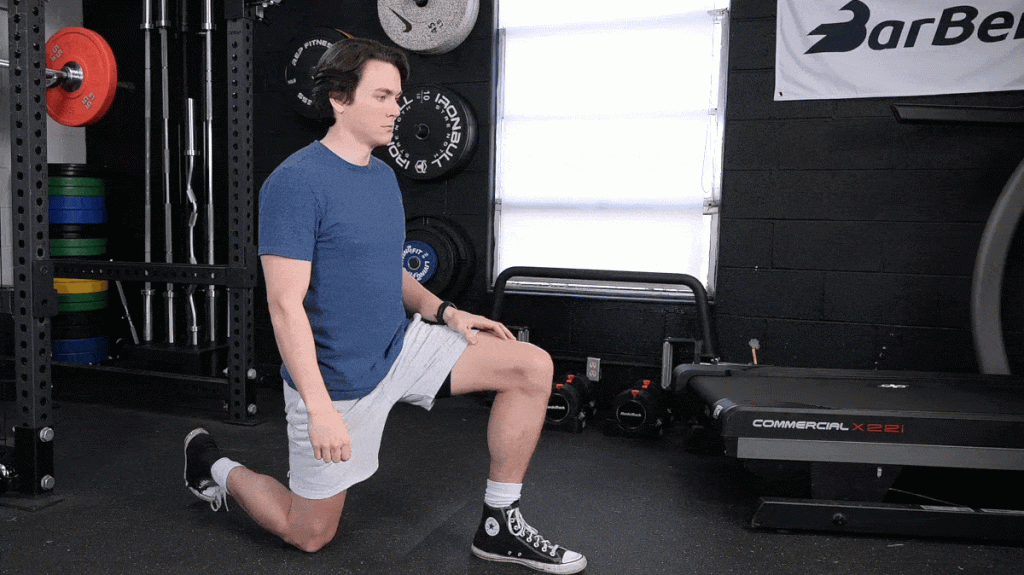
Ideally, dynamic stretching and a proper warm-up are the best ways to prepare for running or walking on a treadmill. Dynamic stretching involves light, repetitive movements that mimic or prepare your body for the upcoming workout, optimally stretching the targeted muscles and improving blood flow to the area that will do the most work. (6)
For example, some of the best running warm-ups can include dynamic stretches, like side lunges or lateral leg swings that can help loosen up your leg muscles from the hips down to the calves, while also increasing blood flow to your lower body so it’s ready for the increased stress that running will bring.
Warm Up and Cool Down
Warm-ups and cool-downs are very important to preventing treadmill injuries. Warm-ups allow your body to prepare for the upcoming stress of exercising by increasing blood flow and raising your body’s temperature. Dynamic stretching can be part of your warm up, but it shouldn’t be the only thing that you do before running on the treadmill.
In addition to dynamic stretching, I recommend five to 10 minutes of walking before running on a treadmill. These two activities can properly warm up your body by improving blood flow, increasing oxygen efficiency in your muscles, sharpening your mental focus, and even assisting in your overall exercise performance.
Cool-downs work in the opposite way as warm-ups. Instead of warming up your body to prepare for a workout, cool-downs help to bring your heart rate, blood pressure and breathing back to their normal levels. (7) In addition to a slow walk for five minutes, some good cool-down movements following a treadmill run include sprinter lunges and hip circles.
Proper Footwear
As mentioned above, proper footwear is integral to treadmill safety. Running in flip-flops, sandals, boots, or even barefoot can result in several different kinds of injuries. If you wear the wrong shoes, the repetitive impact on your feet can lead to blisters, stress fractures, plantar fascia, ankle sprains, tendonitis, and ligament damage. (8)
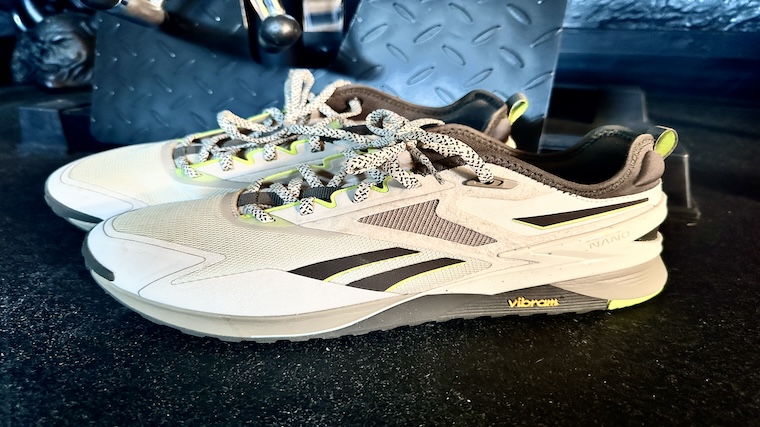
The best running shoes will have efficient shock absorption to help alleviate the pounding of each step. They’ll also have the kind of ankle support that can help prevent you from rolling an ankle and potential spraining or breaking it. Ultimately, proper footwear works to keep your running gait aligned so that you maintain proper form and alleviate any pain or soreness in knees, hips, back and neck.
I’m a particularly big fan of the Adidas Ultraboost 21 running shoes, which I’ve found not only provide cushion, support, and durability, but can also help prevent tendon, ligament, and muscle damage caused by overpronation or supination of your foot.
Final Thoughts
When used properly, treadmills are a great way to exercise and accomplish your health and fitness goals. Unfortunately, this piece of fitness equipment also comes with safety risks. First up, it’s imperative that you read your machine’s user manual before operating it. The safety manual can help alert you to a machine’s various safety features and how to operate them.
It’s about more than just the machine, though. In addition to the treadmill safety tips we outlined above, there are simple practices you can incorporate into your workout routine — proper form, stretching, warm-ups, and cool-downs — that can help prevent injuries. Although improving your health and overall fitness is a wonderful goal, safety should always be the top priority.
FAQs
How common are treadmill injuries?
According to the U.S. Consumer Product Safety Commission, treadmill injuries resulted in over 22,000 emergency room visits in 2019. (1)
How do you prevent injuries when running on a treadmill?
Preventing injuries when running on a treadmill is a multi-level approach that begins with reading the manual. From there, a few key safety tips are to always look forward, wear proper workout attire (including running shoes!), keep the safety key nearby, and incorporate a warm-up and cool-down routine.
Who should not use a treadmill?
In addition to children under the age of 16, adults suffering from any injury or health condition that prevents them from properly using the treadmill as it’s originally intended should not use this exercise machine.
References
- Radzicki McManus, M. (2024, February 22). Treadmills cause thousands of injuries each year. Here’s how to use one safely. CNN. https://www.cnn.com/2024/02/22/health/treadmill-safety-avoid-injury-wellness/index.html
- Consumer Reports. (2021, May 5). How to stay safe on a treadmill. https://www.consumerreports.org/health/treadmills/how-to-stay-safe-on-a-treadmill-a1909564642/
- U.S. Consumer Products Safety Commission (2021, May 5). Peloton Recalls Tread Treadmills Due to Risk of Injury https://www.cpsc.gov/Recalls/2021/Peloton-Recalls-Tread-Treadmills-Due-to-Risk-of-Injury
- Johns Hopkins Medicine. Understanding Your Target Heart Rate. https://www.hopkinsmedicine.org/health/wellness-and-prevention/understanding-your-target-heart-rate
- Schubert, A.G., Kempf, J., Heiderscheit, B. Influence of stride frequency and length on running mechanics: a systematic review. Sports Health. 2014 May;6(3):210-7.
- MacMillan, Carrie. (2021, February 12). How To Stretch Before a Run — Properly. Yale Medicine. https://www.yalemedicine.org/news/how-to-stretch-before-run
- Mayo Clinic Staff. (2023, August 31). Aerobic exercise: How to warm up and cool down. Mayo Clinic. https://www.mayoclinic.org/healthy-lifestyle/fitness/in-depth/exercise/art-20045517
- Weatherford, Brian, M. (2019) Athletic Shoes. American Academy Of Orthopaedic Surgeons. https://orthoinfo.aaos.org/en/staying-healthy/athletic-shoes/